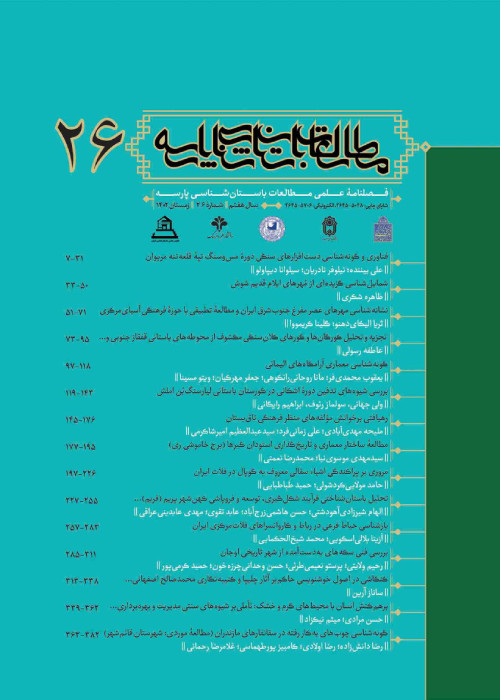Investigation and Analysis of Types of Mastery Village Architecture of the Qajar Period (Case Study: House and Mastery Stables Mehri-Khanoom Qaragozlou in Varkaneh, Hamedan)
Of the common types of late architecture in Iran various mastery buildings some examples of which were made during the Qajar period, that some examples these types are considered by the rulers of the cities and villages of this period. The Varkaneh village is located in the Eastern Alvand district and in the central part of Hamedan in the mountains area, and with Arzanfood-Varkaneh valley 15 km is away. The village has been governed in the Qajar and Pahlavi periods by Naqikhan and Mehri-Khanoom. From the presence of Qaragozlou’s family in the village of Varkaneh are two monuments of the “mastery house” and “stables of breeding horse” with distance of 100 and 500 meters outside the village respectively. Among the buildings of state as selected patterns two different types of local court architecture and comparable to the master’s buildings collection (Qaravol Khaneh) Aghovlar in Talesh will be investigated and analyzed. The main purpose of this paper is to recognize the patterns and transformations created in traditional roral architecture Based on ideas and methods of transformation in two different types of mastery buildings of the Qajar period and beyond. Accordingly, in the present study in addition introduces a descriptive - analytical method, has done analysis and classification of elements of rural architecture and fluently social transformations in the formation mastery architecture of the Qajar period in the Varkaneh village. Questions of this study: What factors have led to placement of these buildings outside context of the village? These buildings under study, how much have been effective of the area architecture? The result of this research is show that the architectural features of these two buildings, a part from the Varkaneh village texture with the effect mastery architecture and European architecture on the Qajar period they were made with indigenous materials.
- حق عضویت دریافتی صرف حمایت از نشریات عضو و نگهداری، تکمیل و توسعه مگیران میشود.
- پرداخت حق اشتراک و دانلود مقالات اجازه بازنشر آن در سایر رسانههای چاپی و دیجیتال را به کاربر نمیدهد.


